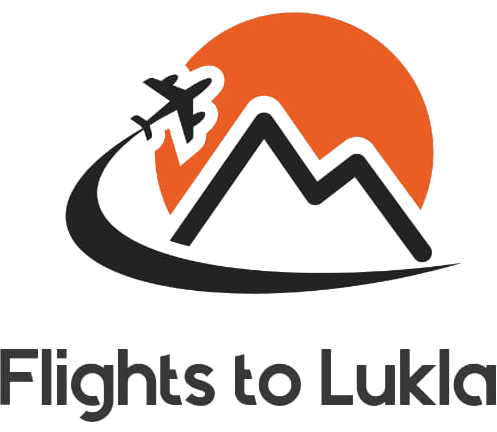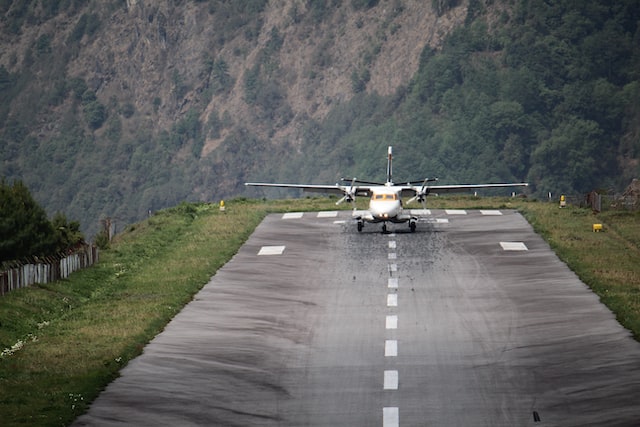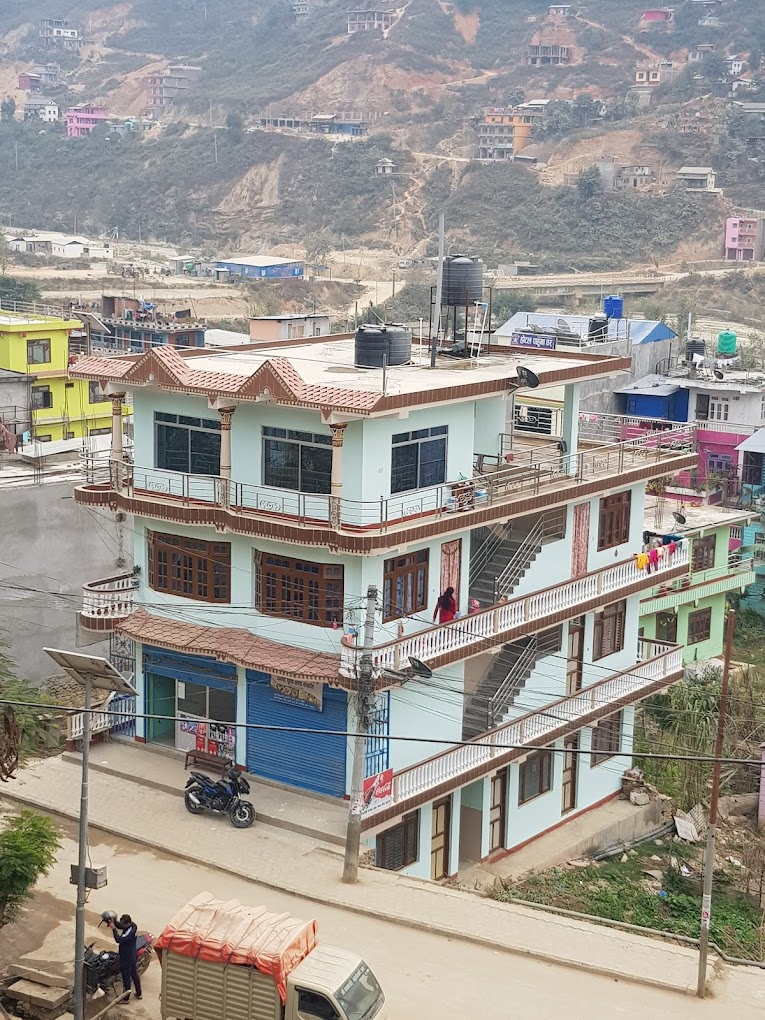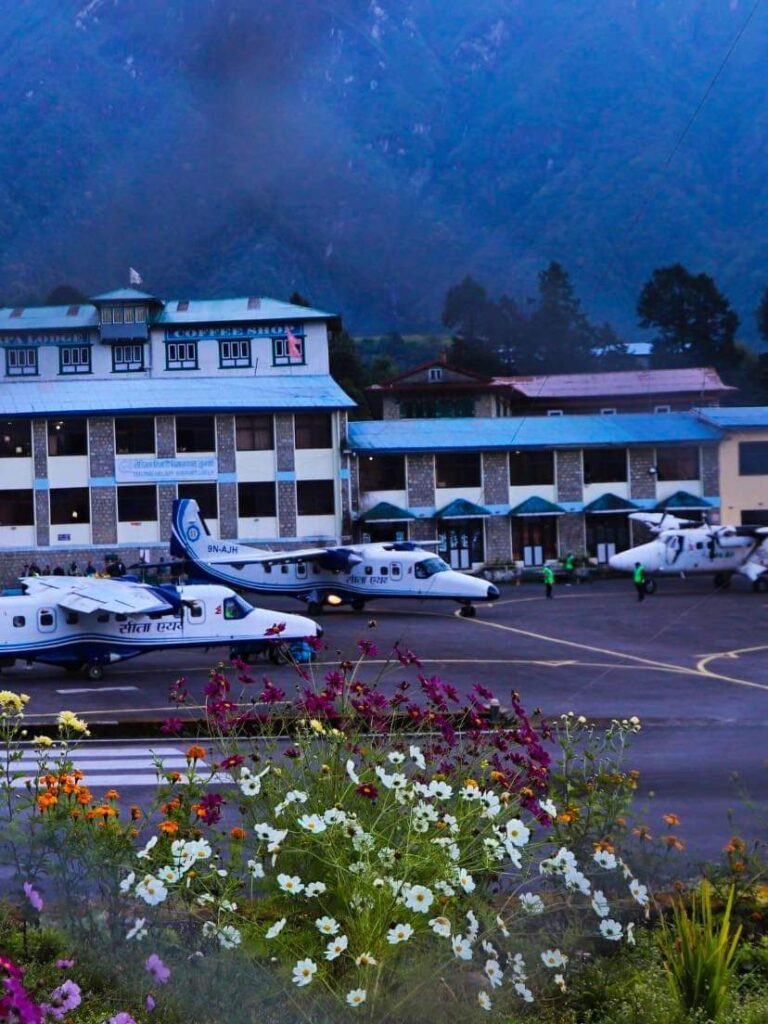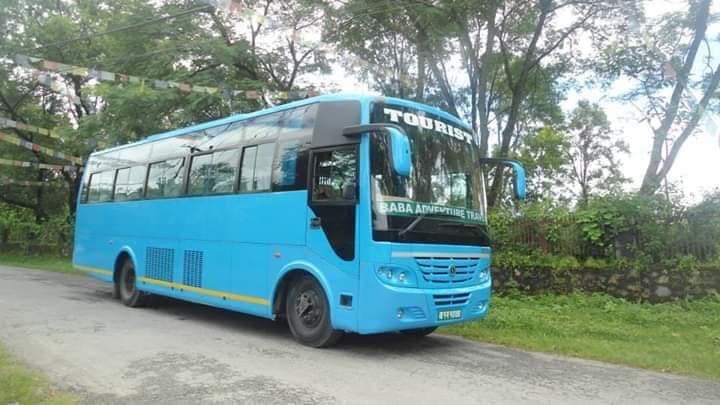There are currently only three airlines operating regular flights at Lukla Airport. Tara Airlines, Sita Air, and Summit Air are the only airlines that land in Lukla. Nepal Airlines occasionally operates flights as well. For some time now, Goma Airlines and Simrik Airlines have stopped flying to Lukla airports. However, they may resume flights soon.
This is because Lukla Airport has one of the world’s shortest and most challenging runways. The limited runway length and the high altitude require aircraft that can take off and land on short runways, making helicopters and STOL (Short Takeoff and Landing) aircraft the safest options for this route. Helicopters and STOL aircraft are more expensive than other aircraft, so many airlines avoid them. As such, flying to Lukla Airport costs more than other airports.
Despite the higher costs, airlines choose to operate flights to Lukla Airport because it serves as the primary gateway to the Everest region, attracting thousands of trekkers and mountaineers annually. The demand for access to this popular destination ensures a steady stream of passengers, making the routes profitable despite the operational challenges. Additionally, providing flights to such a critical location enhances the airlines’ reputations and brand recognition in the region.
Twin Otter, Dornier, Let L-410 Turbolet and Pilatus Turbo Porter are some aircraft flying to Lukla Airport. These aircraft can only carry 13 to 19 passengers at a time. These small and agile aircraft allow them to land in rugged terrain. They are also fuel-efficient, making them suitable for short-haul flights.
The experience of a flight landing at Lukla Airport is both exhilarating and nerve-wracking. As the aircraft approaches, passengers catch breathtaking views of the Himalayan peaks, but the excitement quickly turns to tension as the short, sloped runway comes into sight. The skilled pilots, who demonstrate exceptional bravery, expertly navigate the challenging terrain, bringing the plane to a swift and precise stop, often to the applauding relief of its passengers.
Situated in the Himalayan region of Nepal, Lukla Airport is surrounded by towering peaks that pose significant challenges for pilots. The airport is nestled between steep mountainous terrain and deep valleys, creating unpredictable weather patterns. The proximity to Mount Everest adds to the dramatic and breathtaking scenery and increases the complexity of navigating the area. The airport is one of the most dangerous airports in the world, with a reputation for being one of the most hazardous landings in the world. Pilots must be highly skilled and experienced to fly this route.
The airport’s short and steep runway is only 527 meters long and has a 12% gradient. The challenging terrain and unpredictable weather conditions also require aircraft that can safely perform short takeoffs and landings. Lukla Airport has seen several safety incidents in recent years, underscoring its reputation as one of the most hazardous airports globally. For example, in 2019, a plane skidded off the runway during takeoff, resulting in fatalities. These incidents highlight the critical need for stringent safety protocols and highly skilled pilots adept at managing the airport’s unique challenges.
In response to these challenges, technological advancements have been implemented to enhance safety at Lukla Airport. Enhanced navigation systems, such as GPS-based approaches, provide more precise guidance for pilots during landing and takeoff. Additionally, improved weather forecasting tools help predict and manage the region’s unpredictable weather conditions more effectively.
Pilots flying to Lukla undergo specialized training to handle the airport’s unique challenges. This includes mastering short takeoff and landing techniques and familiarizing themselves with the rugged terrain and rapidly changing weather conditions. Additionally, pilots must complete numerous simulated flights and have significant real-world flying experience in similar situations before they are cleared to operate flights to Lukla.
Other than aircraft flights, only helicopters can land at Lukla Airport. The airport, serving as the busiest helipad in Nepal, plays a significant role in the region, conducting passenger, rescue, and sightseeing flights. Helicopters are on standby at Lukla Airport during the busiest travel season, ready to respond to emergencies, underscoring the airport’s vital role in ensuring safety and connectivity in the Himalayas.
Helicopters play a crucial role in rescue operations at Lukla due to their ability to quickly reach remote and inaccessible areas. In emergencies, they can provide rapid medical evacuation and transport essential supplies to stranded climbers and trekkers. Their life-saving capabilities and agility make them indispensable for ensuring safety in the challenging conditions of the Himalayas, providing a sense of relief to those in need.
One notable rescue mission conducted by helicopters at Lukla Airport was during the 2015 earthquake in Nepal. Helicopters were pivotal in evacuating injured climbers and trekkers from remote locations, bringing them to safety and providing much-needed medical assistance. Their efforts were crucial in saving numerous lives amidst the chaos and destruction caused by the natural disaster.
Interesting facts about Lukla Airport
- In peak trekking and climbing seasons, Lukla Airport handles 50 flights a day.
- In a moving tribute to the indomitable spirit of Sir Edmund Hillary and Tenzing Norgay, the first to conquer Mount Everest, Lukla Airport was renamed Tenzing Hillary Airport in 2008. Considering Lukla’s altitude and geographic location, it is one of the world’s most dangerous airports.
- Lukla Airport is a marvel of engineering, nestled between a towering mountainous wall and a steep drop into the valley below, making it a unique and intriguing location. The only way to reach Lukla from Kathmandu was by road to Jiri and hiking to Lukla for about five days.
- The history of Lukla airport is a testament to human perseverance. Founded in 1964, operations didn’t begin until 1971, and it was only in 2001 that paving on blacktop began. At Lukla Airport, the short runway measures 527 meters (1729 ft.) long and 20 meters (65 ft.) wide, causing difficulty during landings and takeoffs.
Other lesser-known facts about Lukla airport
- Both sides of the runway have a short runway, which is crucial for pedestrian passage.
- Sir Edmund Hillary is responsible for building Lukla airport and not the Nepali government.
- In exchange for $2,650, Edmund Hillary bought the land where the present airport stands from the local Sherpas, who did not want to give up their flat farmlands.
- Sherpa people, well known for their mountaineering skills, assisted Sir Edmund Hillary in building the airport.
- Lukla airport has no air navigation or radar system; landing and takeoffs are controlled by radio communication.
- It has been ranked as the most dangerous airport in the world for more than two decades by Most Extreme Airports on The History Channel.
- Travelers may need to get off the plane even at the last minute before takeoff because weather conditions at Lukla Airport are unpredictable.
Is it risky to fly to Lukla Airport?
As you learn more about Lukla Airport, you may wonder, “Is it hazardous to fly to Lukla?
The short answer is Yes! However, looking at the records, it doesn’t seem as dangerous as one would believe. The topography, weather, location, airport size, and traffic volume in Lukla make it one of the world’s most dangerous airports. It is also true that Lukla airport has a short runway, which adds to its extremity.
It is only the fluctuating weather that makes Lukla Airport intimidating. However, the airport has implemented several safety measures to mitigate these risks. For instance, the airport operates only during daylight hours when the weather is usually more stable. As a result of the numerous factors involved, Lukla Airport can only be accessed and landed by helicopters or small fixed-wing propeller planes. Lukla is a great place to travel, and if you are traveling to Everest Base Camp or Gokyo Ri, Lukla is the gateway airport. In addition, Lukla Airport is the gateway to other destinations. There are alternative routes to Lukla, but these require longer trips, including drives to Jiri, Phaplu, and Salleri.

